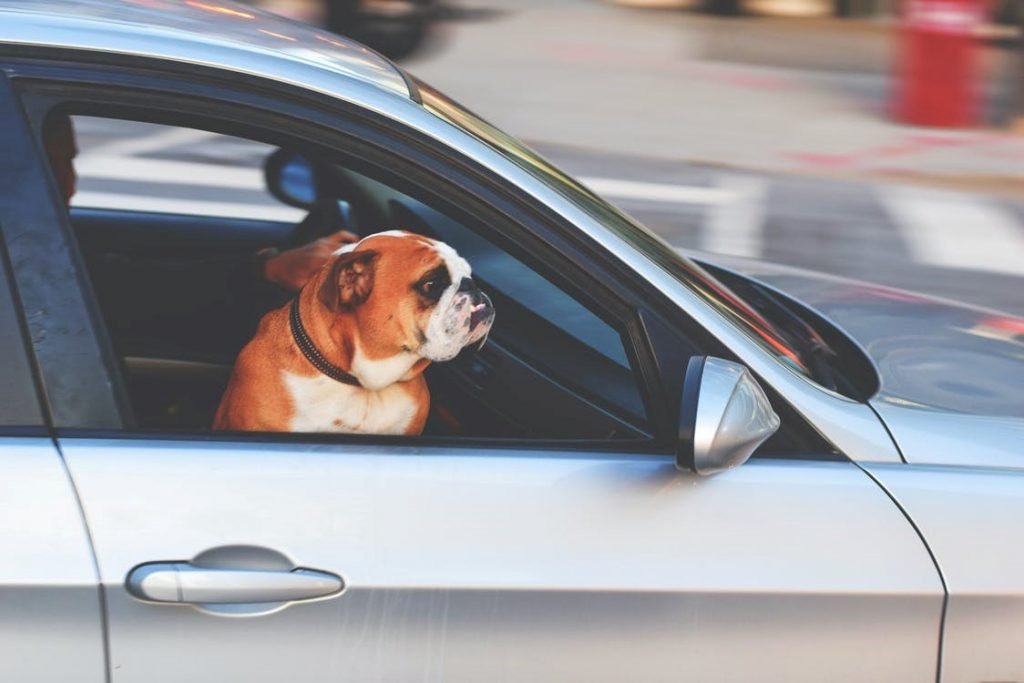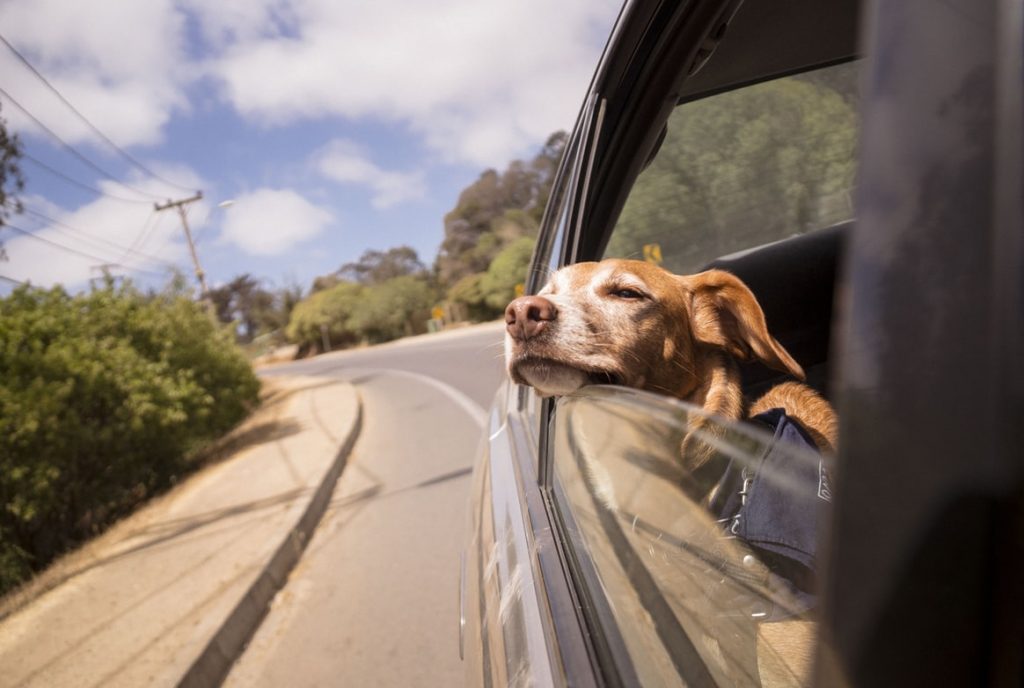Causes of travel sickness in dogs
Travel sickness is very common in puppies under the age of 1 as the inner structures of the ear responsible for balance are not yet fully developed. In some cases, this can also be caused by an inner ear infection that can affect balance or medication making them nauseous.
If left unattended they may begin to associate travelling in a car with vomiting, making them stressed and anxious about each car ride and continuing to make a mess of the back seat.

How long does travel sickness last?
Although less common, dogs above the age of 1 can still be susceptible to travel sickness, this is often due to the issue not being addressed whilst they were still a pup.
Symptoms
Drooling
Panting
Yawning (a sign of stress or anxiety in dogs)
Shaking
Restlessness
Smacking or licking lips
Retching or vomiting.
How to treat travel sickness in dogs
Firstly, don’t rush. Travel sickness can be caused by many things and is a stressful experience for your dog. That’s why it is important to take time when training and testing multiple treatments, so you can travel to new and exciting places with your pup. Helping your dog could be very quick or a very long process, that’s why it is important to be patient and don’t worry if you’re not seeing results straight away.

Get your dog comfortable with your car. Start by simply being in the car with the engine turned off, then progressing to having the engine on and then going for a short drive once your dog is comfortable.
Taking short car journeys will help them climatise to being in a moving car without the stress of being in a confined space for a long time.
What can I give my dog to help with travel sickness?
Having smells from home can be hugely comforting for a dog, try laying some blankets down and placing some toys in a crate. Although somewhat of a contradiction having the window slightly open to introduce new smells and get fresh air flowing can also help with nausea.

There are some licenced medications available to help alleviate the symptoms of travel sickness however always consult your vet before giving your dog medication. For example, your vet may prescribe Gabapentin or Trazodone as these sedatives are an effective treatment for travel sickness however they may come with unwanted side effects so caution is advised. Similarly, antihistamines can help reduce motion sickness and calm your dog, generally with fewer side effects. A common example is Benadryl that can help with sickness and sedate them for longer car journeys.
Make sure not to feed your dog before travel, preferably a couple of hours before. Having less food in their stomach will help reduce nausea and the chance of vomiting.
Helping your dog feel safe and secure.
Preventing your dog from looking out the windows can help reduce the feeling of motion sickness from visual stimuli. Although this can be difficult in the front or back seats, using a boot crate can help alleviate the problem whilst having the added benefit of extra safety. It is important to help your pet adjust and become comfortable with being in the crate as they will see this as a safe space and have more positive associations with being in the car.
Our Petworld Crates are specifically and uniquely designed to fit in almost every car. Our collection of dog crates found here will accommodate almost any brand or model of vehicle.

